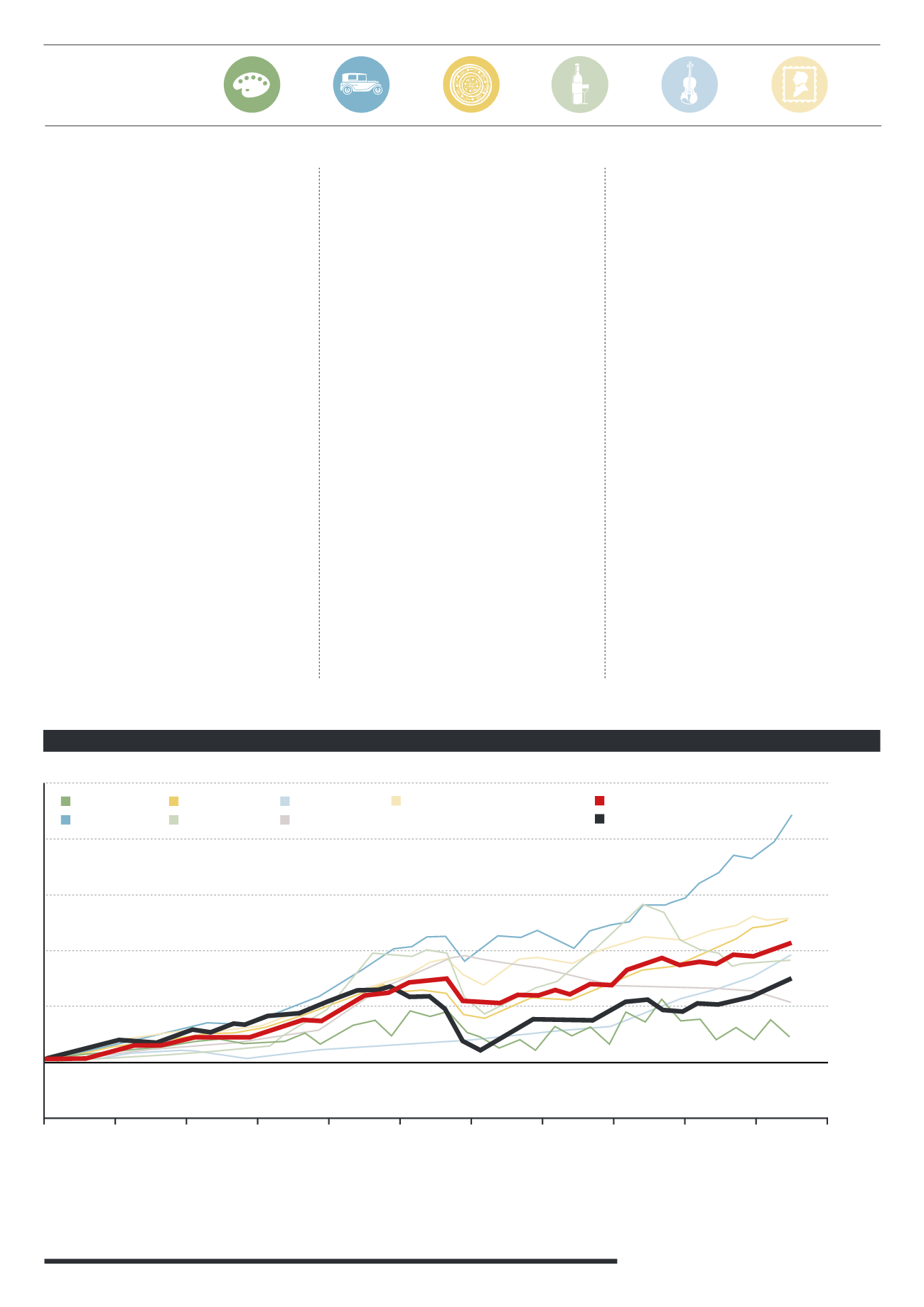
9
PRICE INDICES,
$
TERMS
600
500
400
300
200
100
2013
2012
2011
2010
2009
2008
2007
2006
2005
2004
0
Sources: Art Price: Vintage Guitar magazine; Florien Leonhard Fine Violins; Hagi; Liv-ex; Stanley Gibbons; Thomson Reuters; The Economist
*Including dividend income
**Underlying data not for publication
Q1 2003 = 100
The Economist Valuables Index
MSCI World
Art
Classic Cars
Coins
Wine
Violins
Guitars
Stamps
The Economist has also released the
Economist Valuables Index, which
combines the performance of recognised
indices covering vintage wine, fine art, rare
stamps, precious coins and classic guitars
and violins. Each asset on the index has
been weighted according to Barclays wealth
management holdings of rich individuals:
36% fine art, 25% classic cars, 17% coins,
10% wine, 6% stamps and the remaining
6% guitars and violins. The chart below
shows the performance of this index since
2003, tracked against the performance
of each individual asset and the MSCI
World index to evidence global stock
market returns. There has clearly been
a large amount of volatility across asset
classes, but an investor that diversified
across the whole Economist Valuables
Index would have achieved 211% nominal
growth over a 10 year period since 2003
– compared to 147% (including dividend
income) from the MSCI World index.
Passion assets have some defining
characteristics: the supply of the asset
is relatively fixed and scarce; they tend
to have the ability to last and they
2003 - 2013
provide portfolio protection in a way
that traditional financial assets do not.
Companies can fail, rendering equities
worthless and bonds can default, but
a bottle of fine wine (although it may
degrade if not stored correctly or kept past
its prime) will always be a bottle of fine
wine, a piece of art will always be a piece
of art and rare stamps or coins will remain
rare – nobody can go back in time and
mint more coins or print more stamps.
These kinds of assets are all unique and
individual. They are not fungible (individual
units are not capable of mutual substitution
in the way that say a barrel of oil or a gold
bar is – each asset has to be assessed and
valued individually) and as mentioned
earlier, there is no income stream on which
to base valuations. For these reasons they
do not fit into mainstream investment
models and are often overlooked by
mainstream finance professional and
investors. This helps to give them their
unique diversification properties and
keep them removed from the volatility
seen with mainstream markets, which
are becoming increasingly correlated.
“The clear advantage of
Investments of passion over
traditional investors is the
enjoyment - physical or
emotional - and social cache
that they can bring the collector.
Even if the value of a classic car,
watch or work of art does fall in
value, it will have undoubtedly
provided its owner with a
huge amount of pleasure.”
Andrew Shirley, Knight Frank
HOLDINGS OF
RICH INDIVIDUALS:
6%
6%
25%
17%
10%
36%


